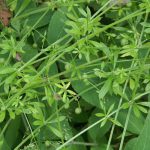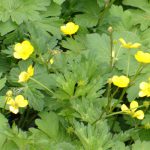Horse or Mares Tail
Equisetum Arvense

One of the most dreaded of weeds, Mares Tail can spread like wildfire so if you see it, deal with it immediately. In Spring brown roots appear with cones and in summer its leaves or “tails” appear. It is an invasive, deep-rooted perennial weed that will spread quickly to form a dense carpet of foliage, crowding out less vigorous plants in beds and borders. Regular forking can help keep it at bay or several applications of weed killer.
Leaves
Marestail doesn’t have true leaves, instead has tough, light-brown or green shoots that resemble pine needles.

Preferred Habitat
Mares Tail is commonly found in undisturbed ground, cracks in paving, walls, waste ground and if you are unlucky, in your garden.
Weed Control
Regular forking can help keep it at bay. It’s critical to controlling horsetail to hoe off the initial stalks to prevent them distributing the spores.
The leaves have a waxy coat, which makes the plant highly resistant to contact weedkillers like glyphosate. Crushing the leaves to break up the coating helps weedkiller to penetrate and become absorbed but in large areas it is not so easy to crush all the leaves . However, glyphosate weed killer will have an effect and eventually kill the plant. You will probably need 5 or more applications. Knock it back, it re-grows and you repeat.
Not Just a Weed
Aside from its health benefits, its leaves have been used for dyeing a soft green colour, the stalks were used to make whistles to call spirits, Indians used it to polish wooden tools, in Japan horsetail is still used as a finest sand paper to sand the wood before varnishing and in shampoos and cosmetics. However, horsetail is valued more for its health benefits due to a number of great minerals and other nutrients it contains.
Horsetail is known for its anti-inflammatory, antibacterial, antimicrobial, antioxidant, coagulant, demulcent, diuretic and astringent activity.













